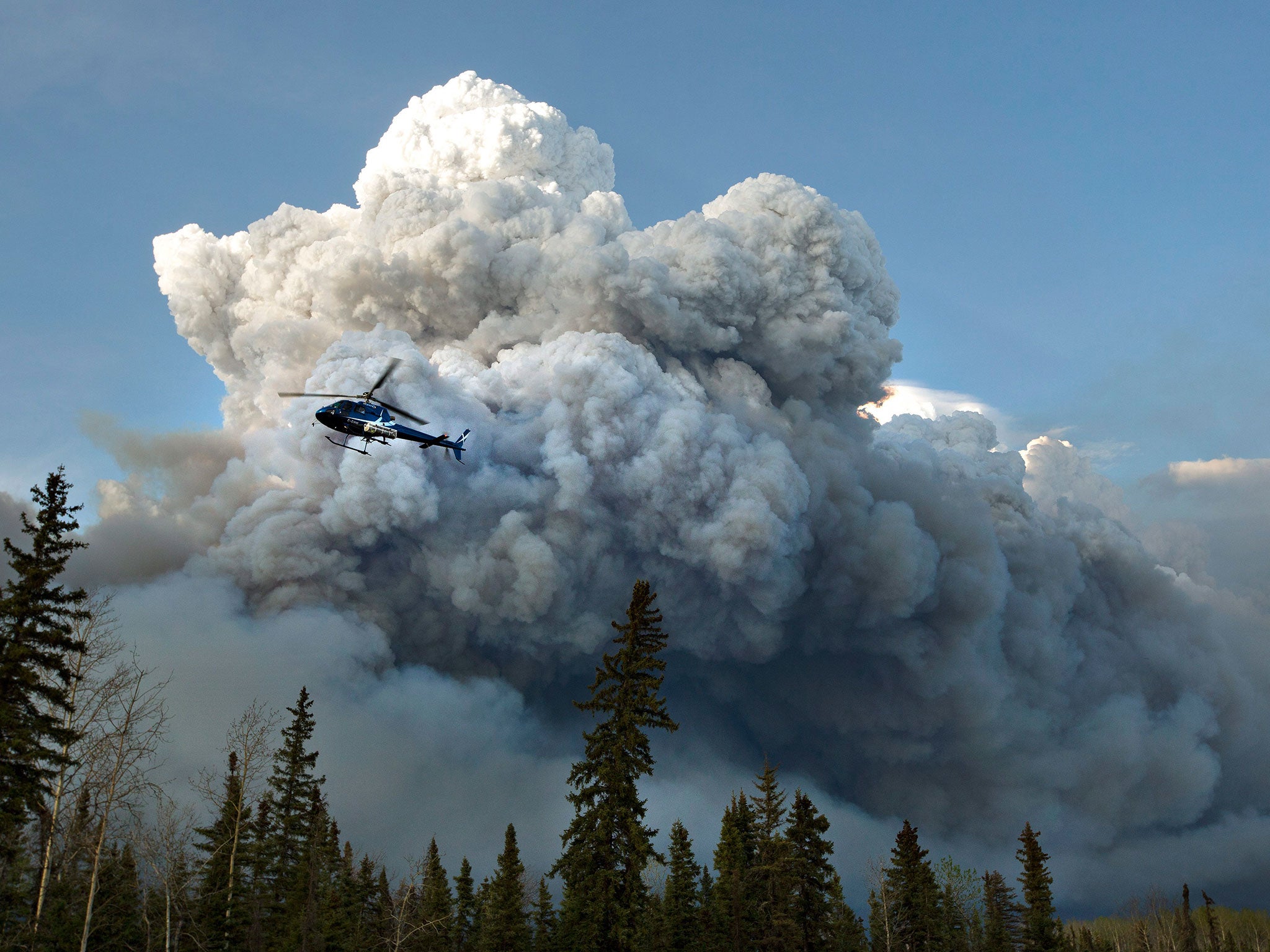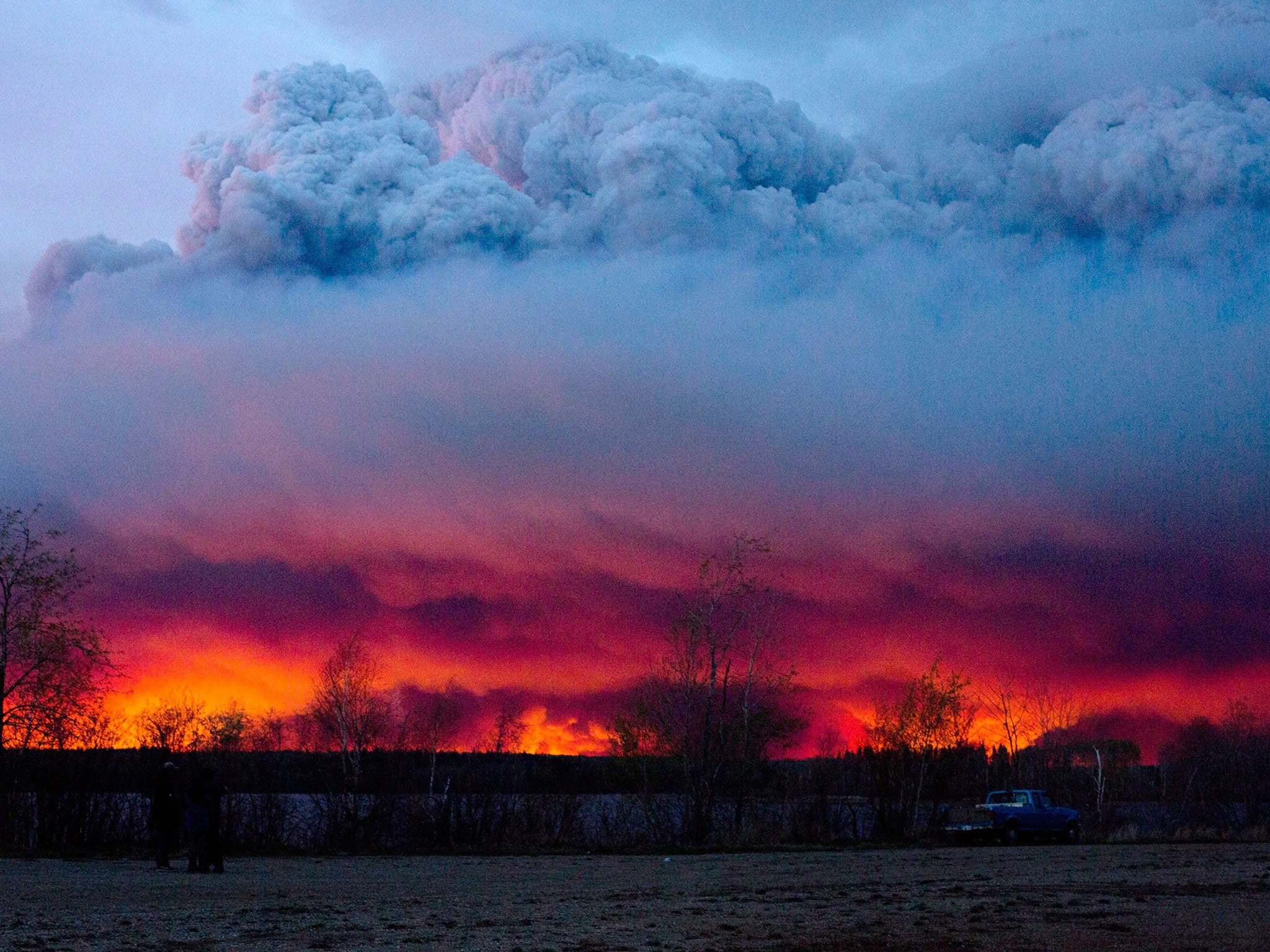Fort McMurray wildfires: State of emergency declared in Alberta as out of control wildfire threatens to destroy city
No injuries or fire related fatalities have been reported

Your support helps us to tell the story
From reproductive rights to climate change to Big Tech, The Independent is on the ground when the story is developing. Whether it's investigating the financials of Elon Musk's pro-Trump PAC or producing our latest documentary, 'The A Word', which shines a light on the American women fighting for reproductive rights, we know how important it is to parse out the facts from the messaging.
At such a critical moment in US history, we need reporters on the ground. Your donation allows us to keep sending journalists to speak to both sides of the story.
The Independent is trusted by Americans across the entire political spectrum. And unlike many other quality news outlets, we choose not to lock Americans out of our reporting and analysis with paywalls. We believe quality journalism should be available to everyone, paid for by those who can afford it.
Your support makes all the difference.Alberta has declared a state of emergency as crews frantically held back wind-whipped wildfires that have already torched 1,600 homes and other buildings in Canada's main oil sands city of Fort McMurray, forcing more than 80,000 residents to flee.
Alberta Premier Rachel Notley said fire had destroyed or damaged an estimated 1,600 structures. Flames are being kept from the downtown area thanks to the "herculean"' efforts of firefighters, said Scott Long of the Alberta Emergency Management Agency. No injuries or fire related fatalities have been reported.
The fire appeared near the airport late Wednesday where crews were onsite. All commercial flights in and out of Fort McMurray have been suspended.
Unseasonably hot temperatures combined with dry conditions have transformed the boreal forest in much of Alberta into a tinder box. Fort McMurray is surrounded by wilderness in the heart of Canada's oil sands — the third largest reserves of oil in the world behind Saudi Arabia and Venezuela.
Danielle Larivee, Alberta's minister of municipal affairs, said the fire is actively burning in residential areas. More than 250 firefighters are battling the blaze. An update from the Municipality of Wood Buffalo later in the evening indicated the fire was continuing to claim homes and had destroyed a new school.
Fatalities have been reported from a collision on a nearby highway but she was unaware if it was related to the evacuation or fire.
There were haunting images of scorched trucks, charred homes and telephone poles, burned out from the bottom up, hanging in the wires like little wooden crosses.
Some residents were evacuated for a second time late Wednesday when they were told to leave their emergency accommodations in the nearby hamlet of Anzac.

Officials said changing weather patterns forced the move. There had been 2,500 evacuees registered at the local recreation center, although it was not known how many were still there when they were told to get on buses for Edmonton further to the south.
Alberta Premier Rachel Notley flew up to survey the situation, and tweeted pictures of the fire from above. "The view from the air is heartbreaking," she wrote
The blaze effectively cut Fort McMurray in two late Tuesday, forcing about 10,000 north to the safety of oil sands work camps.

The other 70,000 or so were sent streaming south in a bumper-to-bumper snake line of cars and trucks that stretched beyond the horizon down Highway 63. Some vehicles sat in ditches, the victims of engine trouble or a lack of gas.
Firefighters were working to protect critical infrastructure, including the only bridge across the Athabasca River and Highway 63, the only major route to the city in or out.
Notley called it the biggest evacuation in the history of the province. Federal Public Safety Minister Ralph Goodale called it one of the largest fire evacuations in Canadian history, if not the largest. "It's a community of 88,000 people that's been totally evacuated," Goodale said. "This is going to take a while to recover."
Canadian Prime Minister Justin Trudeau said while the full extent of the damage isn't yet known he called it "absolutely devastating" and said there's a loss on a scale that's hard to imagine. Trudeau said he's offered the province his government's full support. He encouraged Canadians to support friends and donate to the Red Cross.
Trudeau noted climate change is contributing to an increase in extreme weather and fires but said it's difficult to establish a direct link.
Most oil sands projects are well north of the community, while the worst of the flames were on the city's south side. Allen said he's not aware of any threat to oil facilities but called the fire a "moving animal."
Notley said about 10,000 evacuees moved north where oil sands work camps were being pressed into service to house evacuees. The bulk of the evacuees fled south to Edmonton and elsewhere, and officials said they eventually would like to move everyone south.
Shell said it has shut down production at its Shell Albian Sands mining operations— about 60 miles north of the city — so they can focus on getting families out of the region. Suncor, the largest oil sands operator, said it is reducing production at its regional facility - about 15 miles�north of the�city. Many other companies evacuated non-essential staff.
Chelsie Klassen, a spokeswoman for The Canadian Association of Petroleum Producers, said all large oil sands facilities have emergency crews and plans for forest fires, noting all personnel would be evacuated and facilities would be properly shut to minimize the damage. She noted 80 percent of the oil sands is located deep underground and can only be extracted through a drilling process. The remaining twenty percent is minable from the surface and predominantly located north of Fort McMurray. She said it can burn under certain circumstances, however oil sands would burn at a much slower pace considering its composition with sand.
Former National Hockey League player Doug Sulliman said he could see from his apartment balcony that both sides of the highway south were engulfed in flames and estimated hundreds of homes in the Beacon Hill suburb over the hill were destroyed. "You could hear the pop, pop, pop because of the propane tanks. The fire was just consuming these houses. It just destroyed the whole community," he said.
He said the highway later opened and it was bumper to bumper and said there were many cars on the side of the road because service stations were out of fuel. "There was a Shell gas station that blew up and a Denny's next door. There was nothing but the foundation and it was still smoldering in flames," he said.
Some residents were evacuated for a second time when they were told to leave their emergency accommodations in the nearby hamlet of Anzac.
Officials said changing weather patterns forced the move. There had been 2,500 evacuees registered at the local recreation centre, although it was not known how many were still there when they were told to get on buses for Edmonton further to the south.
Reuters
Join our commenting forum
Join thought-provoking conversations, follow other Independent readers and see their replies
Comments